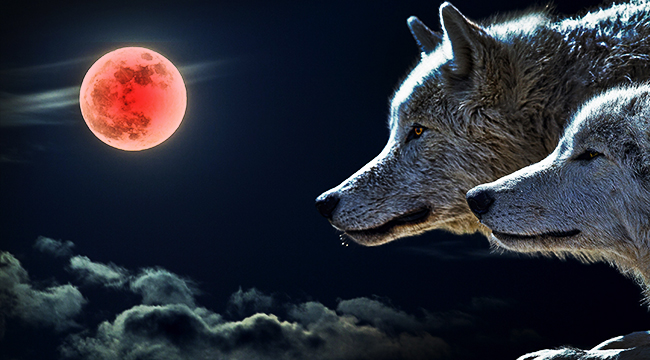
In terms of celestial events, 2019 is already shaping up to be a year full of dazzling sky shows — from meteor showers to a super rare planet transit and multiple eclipses, yes, multiple. Our first eclipse — a total lunar eclipse — of the new year is coming amid perfect conditions and will be visible throughout the Americas, Greenland, Iceland, Western Europe, and Western Africa.
What makes this lunar eclipse special is that it will also be a super moon, and if you add the time of year it’s happening to the equation, we get to add some additional nomenclature and we’re left with the stupidly/epically named “super blood wolf moon.”
So what is a super blood wolf moon and why does it get such a metal name? The name represents three separate celestial events and once we break it down to its individual parts it’s really quite simple to understand. Some days you may have noticed the moon looking much bigger than usual — that was likely a super moon, when the moon is the closest distance it gets to Earth during its orbit, making the moon appear anywhere from 14-30 percent larger than the average nightly moon.
A blood moon is simply the name given for the color that the moon turns during a total lunar eclipse, when the sunlight passing through the Earth’s atmosphere bends around the planet and scatters the shorter wavelength light (blues and greens) and leaves the redder end of the spectrum to fall onto the moon’s surface. Which brings us to the most Game of Thrones-y named celestial event of all time: the wolf moon, a nickname given to the first full moon seen in January.
See, simple. Now you’re basically Galileo.
According to Space.com, this year’s super blood wolf moon will be at full coverage around 11:41 p.m. ET on January 20th, peaking at around 12:16 a.m. Jan 21st. National Geographic reports that the entire show, from partial coverage before and after the eclipse, will last for over three hours so it’s going to be quite the fantastic show.
Where is the best place to view the super blood wolf moon? Well, we’d like to tell you to head to a certified dark sky park. Hell, we would’ve made a whole list of hot spots for you to check out for this month’s show, but the f*cking government is still shut down. Luckily, as long as you look into the sky (and it’s clear) you’re going to be able to see the show, but we suggest trekking outside of the city to the darkest spot you can find, the moon will look much more brilliant there.
There you have it. Now you can flex your sky-knowledge to all your less-informed friends and coworkers when you not-so-subtly mention the upcoming super blood wolf moon. Trust us, with a name like that, their curiosity is going to be fully peaked… just like a super blood wolf moon at 12:16 am ET on January 21st.






